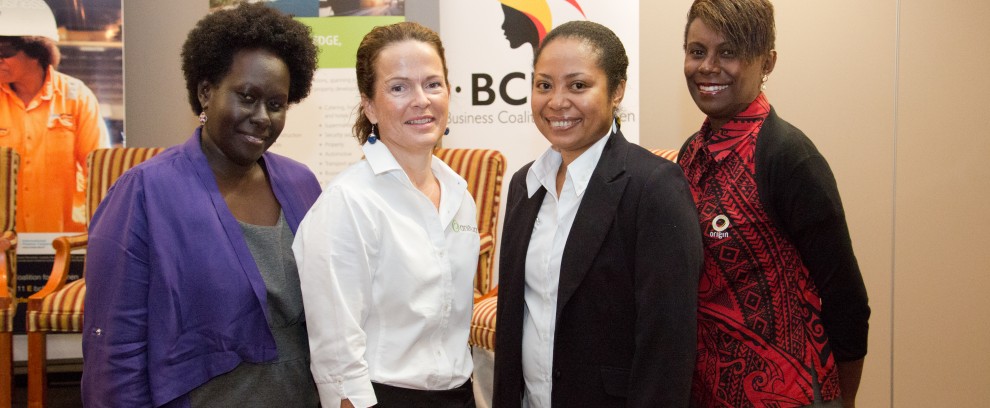The Growth in the Business Leadership Role

Leadership is the timeless practice of guiding others in pursuit of a goal, destination or desired outcome. At the most fundamental level, a leader is someone who motivates, inspires and guides others toward pre-established goals.
The Classic View of a Leader’s Role in Business
A leader was once seen as someone who presided from on high, dispensing wisdom, reward and discipline. The historic view of a leader was of someone in command and control who took a strong role in issuing directives and enforcing their execution while remaining at a distance from the daily work.
The Changing Role of Business Leader Over Time
As times have changed, so has the role of a leader. Today’s leader is focused on identifying and developing talent while laboring to create a healthy environment that allows individuals to apply their talents and skills in pursuit of key objectives. Creating this effective work environment requires that the leader focuses on instilling and reinforcing key values, on modeling proper behaviors, and on instilling a sense of accountability to help teams and work groups succeed with their tasks.
Today’s leader is in the middle of the action, providing support and ensuring proper direction instead of leading his team from on high.
The Importance of Vision to Business Leadership
Today’s leaders understand the importance of developing and gaining support for team-wide vision. The vision is an idealized state of the future or a future destination that provides context for organizational, departmental and individual goals and activities. The vision might focus on succeeding in certain markets, becoming visible as a leading firm in a market or customer segment, or striving to become the most innovate firm in the industry.
Regardless of the actual vision, the leader must create and instill the idea of this destination in the minds of the firm’s or team’s employees. A clear, strong vision serves as a rallying point for employees. It helps people and teams prioritize investments and improvements. It gives everyone in an organization something to strive for in their daily pursuits.
Strategy Is Essential to Role of Business Leader
A strategy is a collection of actions organized in a plan to work toward a vision. Leaders are responsible for working with employees, customers, partners, suppliers, and stakeholders to define, implement and execute a strategy that helps the firm succeed in the marketplace.
The strategy was addressed annually or bi-annually in days gone by. Today, working on strategy is a continuous process involving a wide array of people and focusing on experimentation and learning.
The Necessity of Motivation in Business Leadership
Leaders motivate team members through goal establishment, coaching, feedback and by providing ongoing developmental support. Although money is a component of why everyone works, other intangible factors like rewarding work and the presence of opportunities for professional development are powerful motivators, always assuming that compensation is fair. Effective leaders are constantly on the lookout for ways to tap into the drive and passion of their employees.
Essential Skills and Tasks of Today’s Leaders in Business
A leader’s core role is to guide a group from one destination to another safely. Leaders must:
-Engender trust
-Provide clarity for direction
-Take responsibility for their team members and their team’s results
-Guide a continuous strategy refinement process
-Cultivate and motivate high individual and team performance
-Support experimentation and learning
-Develop talent
-Guide decision-making
-Teach
-Establish and ensure accountability
-Develop and support core values
-Communicate with transparency
How to Improve in the Role of Business Leader
Although some individuals are naturally strong communicators or strategic thinkers, leaders are mostly made and not born. Developing as a leader takes time and experience, and it usually involves making ample mistakes. Libraries are filled with books about leading, but the only way to truly learn to lead is to engage in doing so. Training programs, books, and other materials can be valuable supporting tools, but learning to lead is a full-contact activity. Actions you can take to gain experience and promote the development of your leadership skills include:
-Volunteer to head problem-solving teams in the workplace
-Spend time serving as a project manager
– Get involved in volunteer leadership opportunities outside the workplace, -such as local schools, not-for-profits or your religious institution
-Ask your boss for opportunities to guide or lead initiatives in your department
As you gain experience in supporting and supervising the work of others, challenges will grow in complexity and ambiguity. One consultant describes leadership development as moving outward in a series of concentric circles, with the essential leadership activities at the center and the most challenging work of senior leadership and organizational strategy and development at the far outer rings. Continually seek challenges that move you beyond the known and comfortable areas into new and increasingly complex problems.
Great leaders have a remarkable impact on the people they encounter. They’re motivated to achieve big things, and they do it by guiding, challenging, and supporting others. The work is challenging and sometimes vexing, but it’s remarkably rewarding.